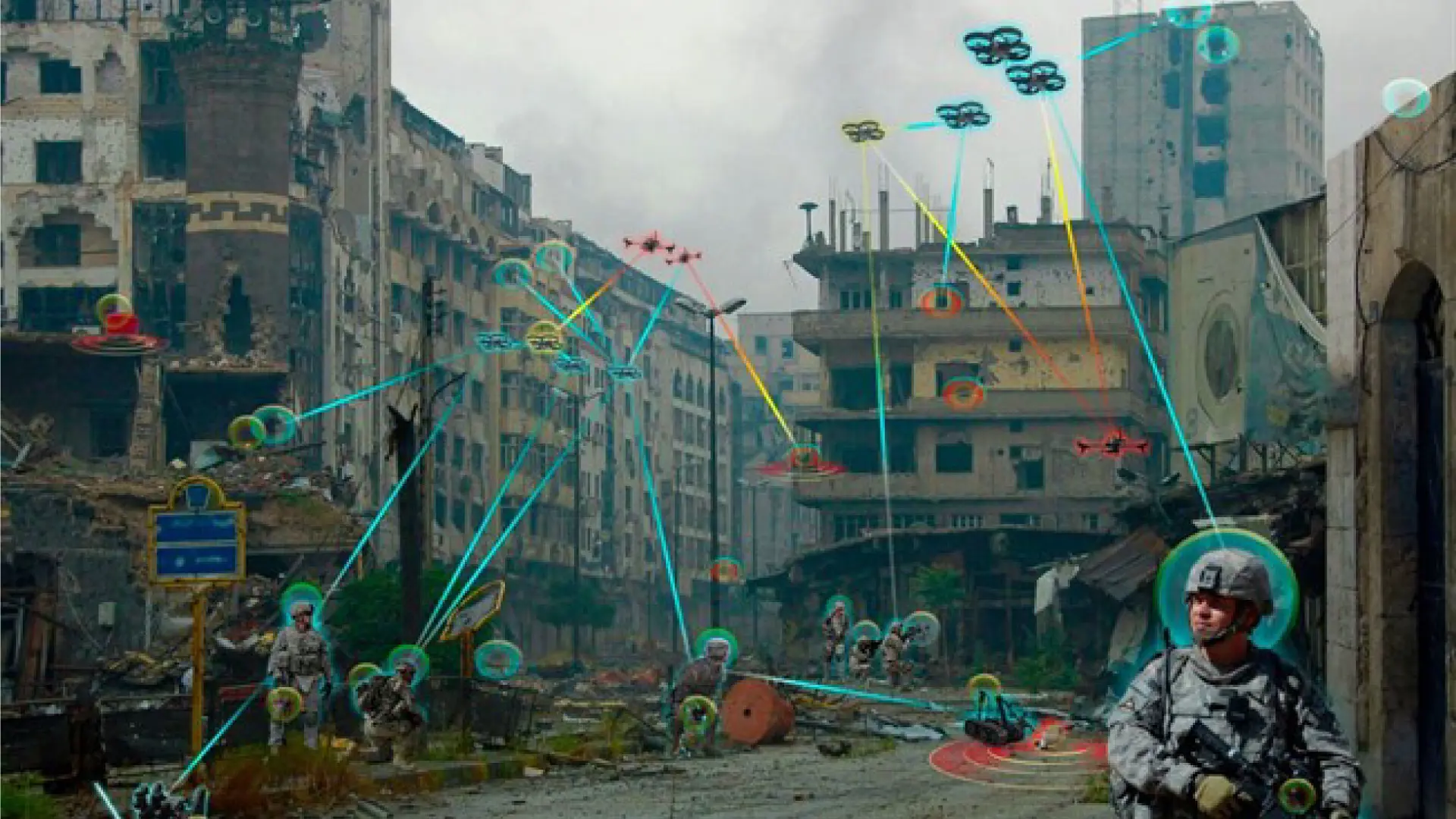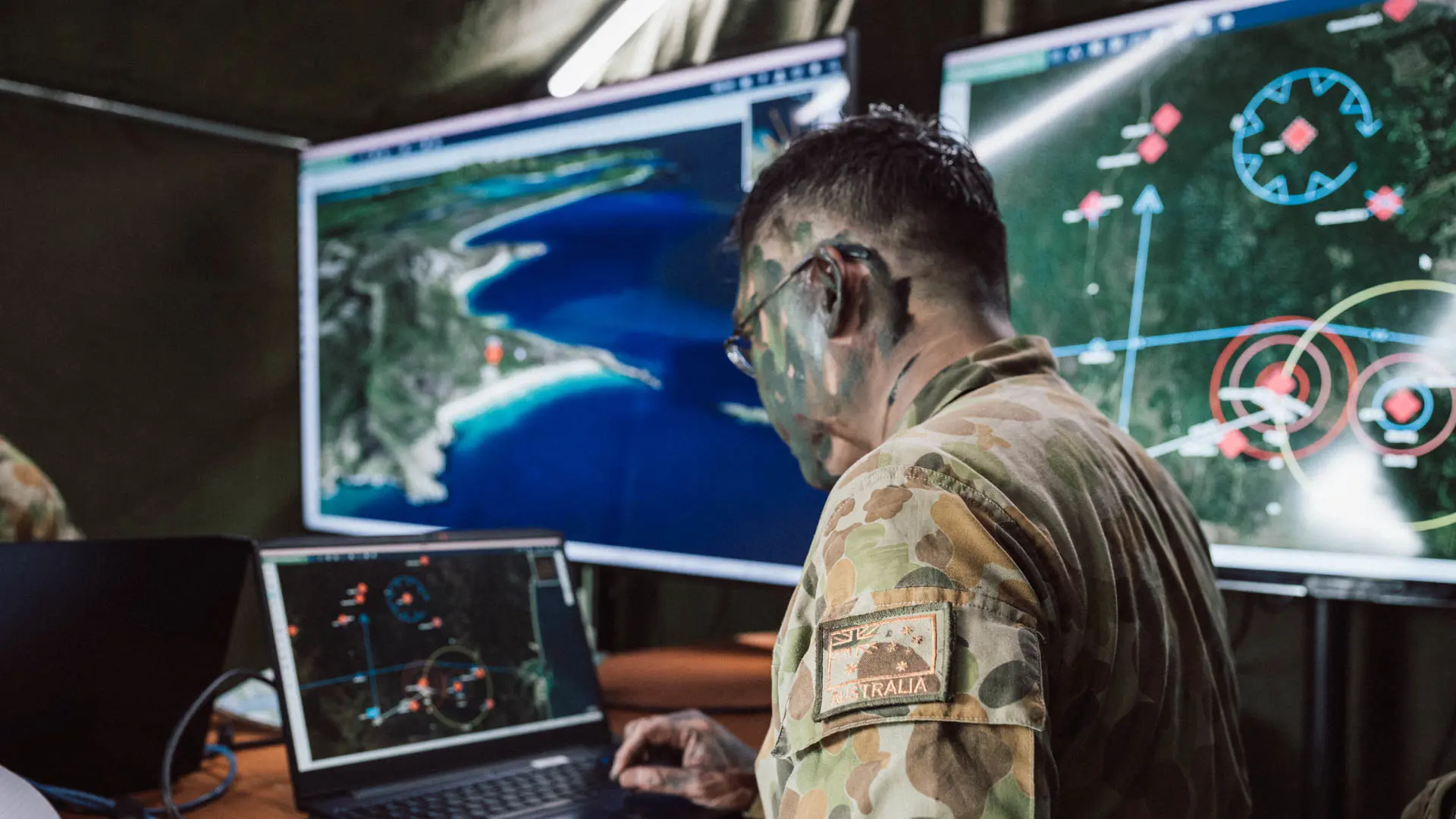Lightening the C2 load - can AI bring a step change at the tactical level?
Artificial intelligence has found a number of defence applications and it is no longer a question of if the technology will be embraced, but rather one of where can it be used and to what extent.
Beyond the headline-grabbing uses of AI there are numerous others that are improving processes and easing the cognitive burden and workload placed on manpower.
The command-and-control (C2) aspect of warfare will certainly benefit from AI technology. Its ability to handle vast volumes of complex data will streamline and speed up decision-making processes and be essential in addressing the emerging requirements of Multi Domain Operations (MDO).

MDO will extend beyond the traditional land, air, and naval domains, to also encompass cyber and space-based warfare. The Joint All Domain C2 (JADC2) aspect will require capabilities that can span all levels of command and address two key considerations: the sheer volume and diversity of data that will be available to commanders, and the speed of action required to affect a winning outcome.
Much of the focus of the application of AI for C2 purposes is placed on higher command levels. Beyond the data processing and analysis functions, the introduction of more advanced AI will provide commanders with decision-support tools, systems that can manage tasks and resources, and – through the use of natural language understanding – analyse multi-source intelligence reports.
Less appreciated are the enhancements that AI technologies can bring to C2 and situational awareness (SA) at the tactical level. While communications are often challenging and computing power limited, there are still opportunities to benefit from AI.
Information overload
For commanders operating at the tip of the spear there is a very real danger of information overload when planning and conducting missions. The cognitive burden is significant and AI can help commanders spend as much time as possible ‘heads up’ and conducting an operation, rather than focused on managing systems.
Terrain analysis tools are a proven, real-world example that can be employed, however, more advanced AI promises the ability to consider a wide range of factors that can have a significant impact on the outcome of a mission.
AI tools that can access and analyse data sets on previous attacks, likely enemy tactics, or communications blackspots, for example, could provide commanders with a far greater appreciation of what needs to be considered in planning an operation. Furthermore, AI could also offer decision support, such as suggesting routes or proposing the assets to be utilised. Essentially, the technology will not only enable commanders to quickly access and consider a much wider range of data than is possible at present, it also promises intelligent and nuanced support.
AI will ultimately have the greatest impact in instances where it is emulating a human’s abilities rather than just those of the human brain, that is, where it is able to assess information in the same way as a human. AI’s ability to conduct sensor fusion – drawing on a wide range of inputs and far quicker than human operators – will bring a step change in capabilities.
This could be especially beneficial at the tactical level, for example, pattern of life analysis tools could greatly enhance SA. Analysing video footage and sensor data collected passively, software could alert a commander to extraordinary circumstances – such as changes in the environment or an increase in the number of potential combatants – and infer if an attack is likely.
The single biggest challenge to enabling more advanced AI to be applied at the tactical level is likely to be centred on computing power and connectivity.
The computing power and data sets needed to deliver many AI-driven capabilities to forward-deployed units cannot, at present, be organic to the force. Therefore there needs to be reachback to these resources.
Into the cloud
Beyond wide bandwidth connectivity, a potential solution is the use of cloud infrastructure. This promises the ability for elements operating at the tactical level to have on-demand access to advanced AI capabilities.
The considerations around cloud technology are too numerous to address here, but it is clear that if C2 systems are to benefit from accessing cloud computing power they must be capable of operating in communications-restricted environments and over minimal bandwidth - especially given the limitations inherent at the tactical level and the potential for interference from an enemy.
Furthermore, if commanders are to truly benefit from AI their C2 systems require open architectures that can easily integrate new applications - given the speed at which new capabilities are being developed - as well as have the ability to interoperate with partner infrastructure and systems.
It is clear that in facing a near-peer threat, speed of action will be more important than ever, and the operational advantage that AI can bring will be disruptive.
*The appearance of U.S. Department of Defense (DoD) visual information does not imply or constitute DoD endorsement.








